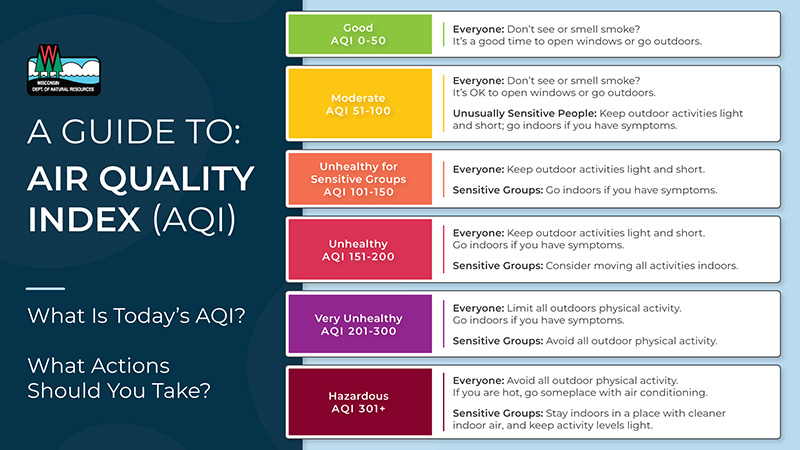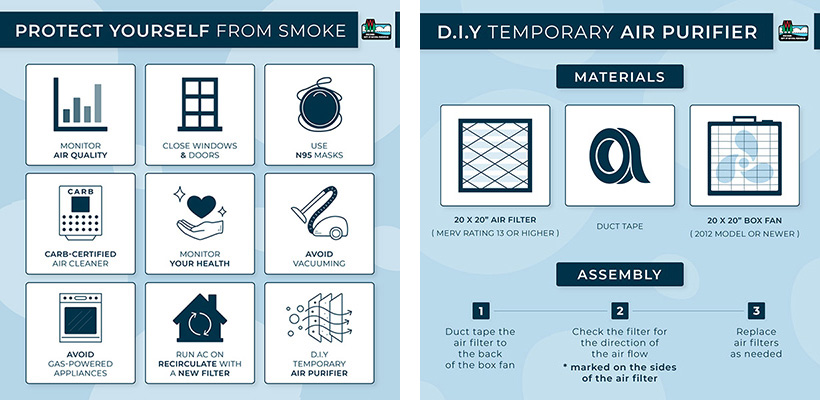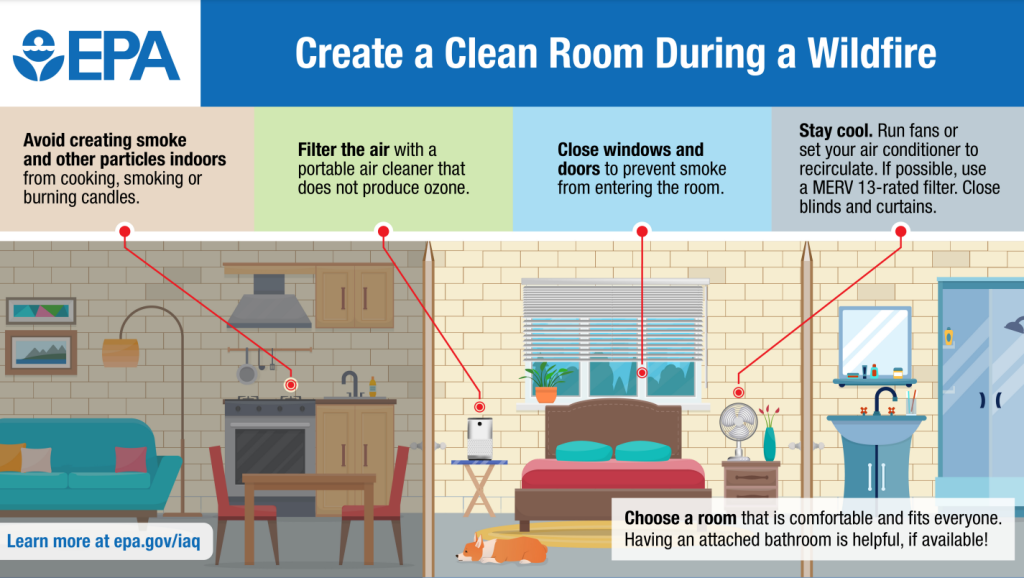Wildfire Smoke
Wildfire Smoke Air Quality Impacts
Larger and more frequent wildfires are a growing public health concern, as wildfire smoke from larger fires can travel and impact air quality hundreds or even thousands of miles away and cause a wide range of health impacts based on a person’s sensitivity to pollutants and the amount of pollutants in the air. Fine particulate matter (PM2.5) is the main pollutant of concern from wildfire smoke. The DNR’s Air Management Program and tribal partners monitor PM2.5 concentrations year-round at 18 sites across Wisconsin.
Air Quality Guide For Particle Pollution
The particles from wildfire smoke can cause a variety of symptoms, from mild eye and throat irritation to more severe heart and lung concerns. These particles, called PM2.5, are small enough to be inhaled deep into the lungs and enter the bloodstream, which can affect the heart and lung functions. This can be especially dangerous for children, the elderly, pregnant women and people who have heart or respiratory conditions. People in these sensitive groups should consider limiting outdoor activities and avoiding heavy exertion when the Air Quality Index (AQI) for PM2.5 reaches the orange Unhealthy for Sensitive Groups
level. Symptoms like coughing or shortness of breath are signs to take a break or go inside, away from the pollutants.
View the EPA's AQI guide for particle pollution, which provides ways to protect your health when particle pollution reaches elevated levels.
For more information on the federal particle pollution standard, review the EPA’s Final Updates to the Air Quality Index For Particulate Matter Fact Sheet And Common Questions document.
Stay Up-to-Date On Air Quality Conditions
- View near real-time air quality conditions from the DNR’s statewide air monitoring network.
- Download the free WisconsinAQM mobile app to receive air quality updates from anywhere using a mobile device. Download in the Apple App Store or the Google Play Store.
- View current wildfire and smoke conditions across North America with the AirNow Fire and Smoke map.
- Sign up to receive air quality advisory notices to your email inbox or via text.
- Sign up to receive customizable EnviroFlash air quality notifications.
Protect Yourself
The best way to prevent breathing particles from wildfire smoke is to stay indoors.
- Close windows and doors.
- Run A/C on recirculate with a new high-efficiency filter.
- Keep indoor air clean by:
- Avoiding activities that increase indoor air pollution, such as vacuuming, burning candles, frying foods or using gas appliances.
- Reducing airborne dust by using a damp cloth to dust the home and trap the particles rather than a dry cloth or duster that might make them airborne again.
- Use an indoor air purifier.
- Cancel outdoor events or move them indoors, especially for children.
- Create a DIY temporary air filter.
If you must go outdoors during wildfire smoke events, be sure to:
- Check air quality conditions before leaving the house and throughout the day.
- Avoid or limit exercising outdoors.
- Wear an N-95 mask.
- OSHA has a comprehensive website with safety tips and resources to help employers and workers reduce their exposure to smoke during wildfires.
- The National Institute for Occupational Safety and Health offers resources for outdoor workers exposed to wildfire smoke.
- For more information and resources on wildfire smoke, visit the EPA's Smoke-Ready toolbox page.



